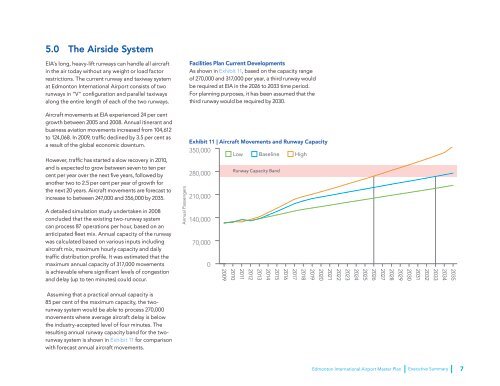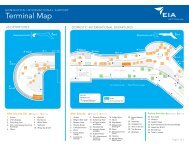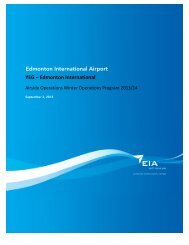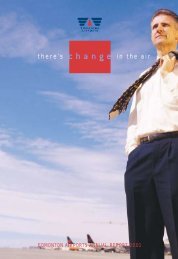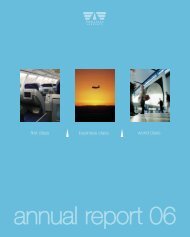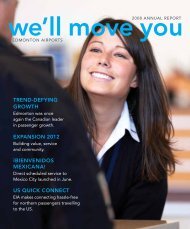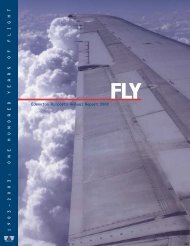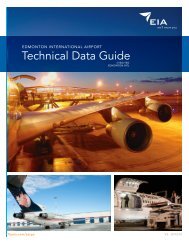Edmonton International Airport Master Plan 2010-2035 Executive ...
Edmonton International Airport Master Plan 2010-2035 Executive ...
Edmonton International Airport Master Plan 2010-2035 Executive ...
- No tags were found...
Create successful ePaper yourself
Turn your PDF publications into a flip-book with our unique Google optimized e-Paper software.
5.0 The Airside SystemEIA’s long, heavy-lift runways can handle all aircraftin the air today without any weight or load factorrestrictions. The current runway and taxiway systemat <strong>Edmonton</strong> <strong>International</strong> <strong>Airport</strong> consists of tworunways in “V” configuration and parallel taxiwaysalong the entire length of each of the two runways.Facilities <strong>Plan</strong> Current DevelopmentsAs shown in Exhibit 11, based on the capacity rangeof 270,000 and 317,000 per year, a third runway wouldbe required at EIA in the 2026 to 2033 time period.For planning purposes, it has been assumed that thethird runway would be required by 2030.Aircraft movements at EIA experienced 24 per centgrowth between 2005 and 2008. Annual itinerant andbusiness aviation movements increased from 104,612to 124,068. In 2009, traffic declined by 3.5 per cent asa result of the global economic downturn.However, traffic has started a slow recovery in <strong>2010</strong>,and is expected to grow between seven to ten percent per year over the next five years, followed byanother two to 2.5 per cent per year of growth forthe next 20 years. Aircraft movements are forecast toincrease to between 247,000 and 356,000 by <strong>2035</strong>.A detailed simulation study undertaken in 2008concluded that the existing two-runway systemcan process 87 operations per hour, based on ananticipated fleet mix. Annual capacity of the runwaywas calculated based on various inputs includingaircraft mix, maximum hourly capacity and dailytraffic distribution profile. It was estimated that themaximum annual capacity of 317,000 movementsis achievable where significant levels of congestionand delay (up to ten minutes) could occur.Annual PassengersExhibit 11 | Aircraft Movements and Runway Capacity350,000Low Baseline HighRunway Capacity Band280,000210,000140,00070,00002009<strong>2010</strong>201120122013201420152016201720182019202020212022202320242025202620272028202920302031203220332034<strong>2035</strong>Assuming that a practical annual capacity is85 per cent of the maximum capacity, the tworunwaysystem would be able to process 270,000movements where average aircraft delay is belowthe industry-accepted level of four minutes. Theresulting annual runway capacity band for the tworunwaysystem is shown in Exhibit 11 for comparisonwith forecast annual aircraft movements.<strong>Edmonton</strong> <strong>International</strong> <strong>Airport</strong> <strong>Master</strong> <strong>Plan</strong><strong>Executive</strong> Summary7


